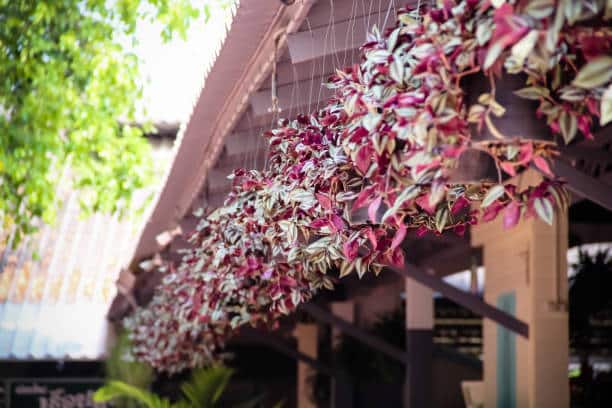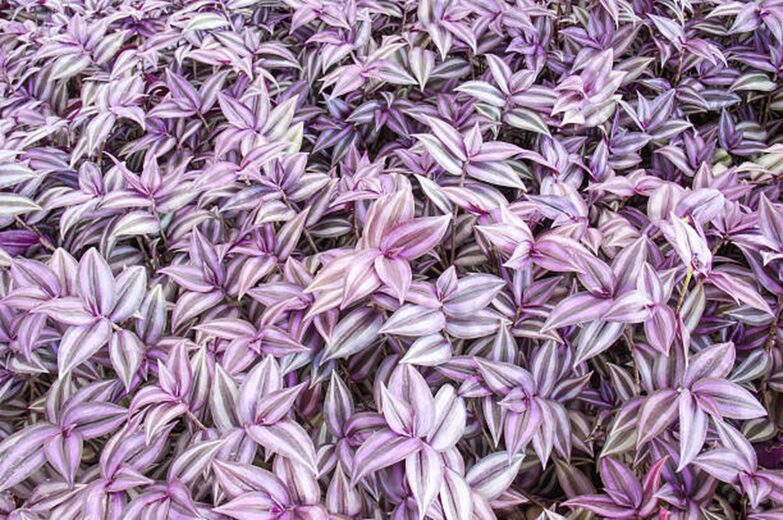Inch plants, known for their intriguing climbing habits and eye-catching foliage, have become increasingly popular among plant enthusiasts worldwide. Their distinctive, variegated leaves in various shades of green, white, and pink make them an attractive addition to any indoor or outdoor garden. In this ultimate guide to inch plants, we’ll explore the diverse species available, their care requirements, and how to propagate these stunning plants. So, let’s climb to new heights and dive into the captivating world of inch plants!
A Closer Look at Inch Plants
What are Inch plants?
Inch plants, or Tradescantia, are a genus of perennial, evergreen plants native to the Americas, with around 75 different species. They are part of the family Commelinaceae and are commonly known as spiderwort, wandering Jew, or inch plant due to their rapid growth rate and creeping stems. Many of these plants are favored for their attractive foliage, hardiness, and low-maintenance care, making them a popular choice for both novice and experienced gardeners.
Types of Inch Plants
There are numerous species and cultivars of inch plants, each with unique features and characteristics. Some of the most popular varieties include:
- Tradescantia zebrina: Recognizable by its silver and green striped leaves with a purple underside, this species is known for its stunning foliage and vigorous growth.
- Tradescantia fluminensis: Often called the “green inch plant,” this species boasts bright green leaves and white flowers, making it a subtle yet attractive choice for any garden.
- Tradescantia pallida: Also known as the “purple heart” or “purple queen,” this inch plant showcases deep purple leaves that provide a striking contrast to its delicate pink flowers.
- Tradescantia spathacea: Commonly referred to as the “mosaic plant” or “oyster plant,” this species features green leaves with white or silver stripes and a purple underside.
Caring for Your Inch Plant
Light Requirements
Inch plants thrive in bright, indirect light, making them an excellent choice for indoor gardens or outdoor spaces with filtered sunlight. They can tolerate some direct sun, but excessive exposure may cause their leaves to scorch or fade. If you’re growing your inch plant indoors, placing it near an east or west-facing window is ideal. Rotate your plant every few weeks to ensure even growth.
Watering and Humidity
A well-draining potting mix, such as a blend of peat moss, perlite, and compost, is crucial for the healthy growth of inch plants. Fertilize your plant monthly during the growing season (spring and summer) with a balanced, water-soluble fertilizer diluted to half strength. Reduce feeding to once every two months during the dormant season (fall and winter).
Temperature and Air Circulation
Inch plants enjoy moderate temperatures, typically between 65 and 75 degrees Fahrenheit (18 and 24 degrees Celsius). Avoid placing your plant in drafty areas or near heating and cooling vents, as extreme temperature fluctuations can stress the plant. Inch plants can tolerate short periods of colder temperatures but may suffer damage or die if exposed to temperatures below 50 degrees Fahrenheit (10 degrees Celsius) for an extended time. Good air circulation is essential for preventing pests and diseases, so ensure your plant has adequate space to grow and breathe.
Propagating Inch Plants
Stem Cuttings
One of the easiest and most successful methods of propagating inch plants is through stem cuttings. Follow these simple steps to grow new plants from your existing inch plant:
- Select a healthy, pest-free stem with at least three sets of leaves.
- Using a clean, sharp pair of scissors or pruning shears, cut the stem below a node (the point where the leaves meet the stem) at a 45-degree angle.
- Remove the lower leaves from the cutting, leaving only the top two or three sets of leaves.
- Place the cut end of the stem in a glass of water or directly into a moist, well-draining potting mix.
- If using water, replace it every few days to maintain cleanliness and prevent bacterial growth. Root development should occur within 1-2 weeks.
- Once the cutting has developed a healthy root system, transplant it into a pot filled with a well-draining potting mix.
Division
For species of inch plants that grow in dense clumps, such as Tradescantia spathacea, the division is another effective propagation method. To propagate by division, follow these steps:
- Gently remove the parent plant from its pot, taking care not to damage the root system.
- Carefully separate the plant into smaller sections, each with a healthy root system and several leaves.
- Replant each division into its own pot filled with well-draining potting mix, ensuring the roots are covered but the leaves remain above the soil line.
- Water the newly divided plants thoroughly, allowing the excess water to drain away.
Common Inch Plant Pests and Diseases
Pests
Inch plants can be susceptible to common houseplant pests, such as spider mites, aphids, and scale insects. To prevent infestations, regularly inspect your plants for signs of pests and keep them clean by gently wiping the leaves with a damp cloth. If you notice an infestation, treat the plant with insecticidal soap or neem oil, following the manufacturer’s instructions.
Diseases
The most common diseases affecting inch plants are root rot and fungal infections, often caused by overwatering or poorly draining soil. To prevent these issues, always use a well-draining potting mix and avoid overwatering your plants. If you notice yellowing leaves, wilting, or a foul smell emanating from the soil, your plant may be suffering from root rot. Remove the affected plant from its pot, trim away any rotten roots, and repot it in fresh, well-draining potting mix.
Inch Plants in Home Décor

Hanging Baskets and Containers
Due to their trailing growth habit, inch plants make excellent additions to hanging baskets and containers, providing a cascade of vibrant foliage. Choose a well-draining container with drainage holes and use a high-quality potting mix to ensure your inch plant thrives.
Vertical Gardens
Inch plants are perfect candidates for vertical gardens, adding visual interest and texture to your living space. Their creeping stems will climb up trellises or supports, creating a lush, green wall that can act as a focal point in your home or outdoor space.
Conclusion
Inch plants are a diverse and fascinating group of plants, beloved by gardeners for their striking foliage and low-maintenance care requirements. By providing the right conditions and following proper care practices.

